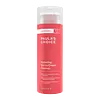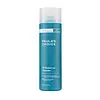What's inside
What's inside
 Key Ingredients
Key Ingredients

No key ingredients
 Benefits
Benefits

 Concerns
Concerns

 Ingredients Side-by-side
Ingredients Side-by-side

Water
Skin ConditioningSodium Cocoyl Glycinate
CleansingCocamidopropyl Hydroxysultaine
CleansingSodium Lauroamphoacetate
CleansingCocamidopropyl Betaine
CleansingGlycerin
HumectantSorbeth-230 Tetraoleate
EmulsifyingDecyl Glucoside
CleansingPentylene Glycol
Skin ConditioningSodium Chloride
MaskingDisodium Cocoyl Glutamate
CleansingLauric Acid
CleansingLactic Acid
BufferingSodium Lauroyl Oat Amino Acids
CleansingSorbitan Laurate
EmulsifyingSodium Cocoyl Glutamate
CleansingDisodium EDTA
Aloe Barbadensis Leaf Juice Powder
Skin ConditioningCaprylic/Capric Triglyceride
MaskingCocoyl Proline
Skin ConditioningSodium Citrate
BufferingCamellia Sinensis Leaf Extract
AntimicrobialGlycyrrhiza Glabra Root
Skin ConditioningSodium PCA
HumectantSodium Lactate
BufferingArginine
MaskingGlycine Soja Sterols
EmollientLinoleic Acid
CleansingPhospholipids
Skin ConditioningAspartic Acid
MaskingPCA
HumectantGlycine
BufferingAlanine
MaskingSerine
MaskingValine
MaskingIsoleucine
Skin ConditioningProline
Skin ConditioningThreonine
Potassium Citrate
BufferingLactoperoxidase
StabilisingHistidine
HumectantPhenylalanine
MaskingGlucose Oxidase
StabilisingCitric Acid
BufferingPhenoxyethanol
PreservativeEthylhexylglycerin
Skin ConditioningPotassium Sorbate
PreservativeSodium Benzoate
MaskingWater, Sodium Cocoyl Glycinate, Cocamidopropyl Hydroxysultaine, Sodium Lauroamphoacetate, Cocamidopropyl Betaine, Glycerin, Sorbeth-230 Tetraoleate, Decyl Glucoside, Pentylene Glycol, Sodium Chloride, Disodium Cocoyl Glutamate, Lauric Acid, Lactic Acid, Sodium Lauroyl Oat Amino Acids, Sorbitan Laurate, Sodium Cocoyl Glutamate, Disodium EDTA, Aloe Barbadensis Leaf Juice Powder, Caprylic/Capric Triglyceride, Cocoyl Proline, Sodium Citrate, Camellia Sinensis Leaf Extract, Glycyrrhiza Glabra Root, Sodium PCA, Sodium Lactate, Arginine, Glycine Soja Sterols, Linoleic Acid, Phospholipids, Aspartic Acid, PCA, Glycine, Alanine, Serine, Valine, Isoleucine, Proline, Threonine, Potassium Citrate, Lactoperoxidase, Histidine, Phenylalanine, Glucose Oxidase, Citric Acid, Phenoxyethanol, Ethylhexylglycerin, Potassium Sorbate, Sodium Benzoate
Water
Skin ConditioningSodium Cocoyl Isethionate
CleansingSodium Lauroamphoacetate
CleansingStearic Acid
CleansingGlycerin
HumectantGlycol Distearate
EmollientHelianthus Annuus Seed Oil
EmollientAcrylates Copolymer
Cetearyl Alcohol
EmollientAloe Barbadensis Leaf Extract
EmollientSodium Chloride
MaskingSodium Hydroxide
BufferingXanthan Gum
EmulsifyingCaprylyl Glycol
EmollientHexylene Glycol
EmulsifyingDisodium EDTA
Phenoxyethanol
PreservativeWater, Sodium Cocoyl Isethionate, Sodium Lauroamphoacetate, Stearic Acid, Glycerin, Glycol Distearate, Helianthus Annuus Seed Oil, Acrylates Copolymer, Cetearyl Alcohol, Aloe Barbadensis Leaf Extract, Sodium Chloride, Sodium Hydroxide, Xanthan Gum, Caprylyl Glycol, Hexylene Glycol, Disodium EDTA, Phenoxyethanol
 Reviews
Reviews

Ingredients Explained
These ingredients are found in both products.
Ingredients higher up in an ingredient list are typically present in a larger amount.
Disodium EDTA plays a role in making products more stable by aiding other preservatives.
It is a chelating agent, meaning it neutralizes metal ions that may be found in a product.
Disodium EDTA is a salt of edetic acid and is found to be safe in cosmetic ingredients.
Learn more about Disodium EDTAGlycerin is already naturally found in your skin. It helps moisturize and protect your skin.
A study from 2016 found glycerin to be more effective as a humectant than AHAs and hyaluronic acid.
As a humectant, it helps the skin stay hydrated by pulling moisture to your skin. The low molecular weight of glycerin allows it to pull moisture into the deeper layers of your skin.
Hydrated skin improves your skin barrier; Your skin barrier helps protect against irritants and bacteria.
Glycerin has also been found to have antimicrobial and antiviral properties. Due to these properties, glycerin is often used in wound and burn treatments.
In cosmetics, glycerin is usually derived from plants such as soybean or palm. However, it can also be sourced from animals, such as tallow or animal fat.
This ingredient is organic, colorless, odorless, and non-toxic.
Glycerin is the name for this ingredient in American English. British English uses Glycerol/Glycerine.
Learn more about GlycerinPhenoxyethanol is a preservative that has germicide, antimicrobial, and aromatic properties. Studies show that phenoxyethanol can prevent microbial growth. By itself, it has a scent that is similar to that of a rose.
It's often used in formulations along with Caprylyl Glycol to preserve the shelf life of products.
Chances are, you eat sodium chloride every day. Sodium Chloride is also known as table salt.
This ingredient has many purposes in skincare: thickener, emulsifier, and exfoliator.
You'll most likely find this ingredient in cleansers where it is used to create a gel-like texture. As an emulsifier, it also prevents ingredients from separating.
There is much debate on whether this ingredient is comedogenic. The short answer - comedogenic ratings don't tell the whole story. Learn more about comegodenic ratings here.
The concensus about this ingredient causing acne seems to be divided. Research is needed to understand if this ingredient does cause acne.
Scrubs may use salt as the primary exfoliating ingredient.
Learn more about Sodium ChlorideWe don't have a description for Sodium Lauroamphoacetate yet.
Water. It's the most common cosmetic ingredient of all. You'll usually see it at the top of ingredient lists, meaning that it makes up the largest part of the product.
So why is it so popular? Water most often acts as a solvent - this means that it helps dissolve other ingredients into the formulation.
You'll also recognize water as that liquid we all need to stay alive. If you see this, drink a glass of water. Stay hydrated!
Learn more about Water